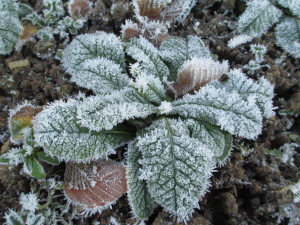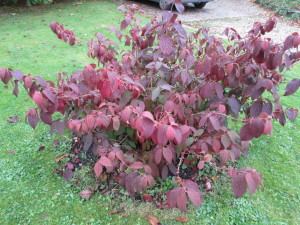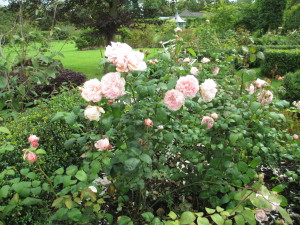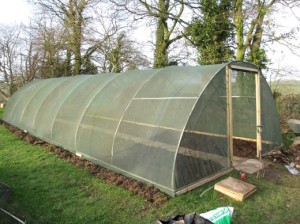 Time to take stock of a very busy Spring: several articles in magazines and newspapers brought more attention than I expected to my garden. Rather disconcerting as I saw how many weeds there were lurking around. The primroses had a very good season. Top of the list for flowering: Easter Bonnet, Sunshine Suzie, Petticoat, Bon Accord Purple. Belarina Valentine is proving to be a good garden plant. My new shrub walk is slowly taking shape and I am starting to plant primroses out there. Petticoat has been in flower there since January. It faded at the end of April but now in mid-May is back in flower again. I keep being asked which my favourite double is which is an impossible question, probably the one which is in flower at that moment! This pale blue un-named Barnhaven is fast becoming a favourite though. The flowers are small but that adds to the charm, and it certainly doesn’t lack flowers.
Time to take stock of a very busy Spring: several articles in magazines and newspapers brought more attention than I expected to my garden. Rather disconcerting as I saw how many weeds there were lurking around. The primroses had a very good season. Top of the list for flowering: Easter Bonnet, Sunshine Suzie, Petticoat, Bon Accord Purple. Belarina Valentine is proving to be a good garden plant. My new shrub walk is slowly taking shape and I am starting to plant primroses out there. Petticoat has been in flower there since January. It faded at the end of April but now in mid-May is back in flower again. I keep being asked which my favourite double is which is an impossible question, probably the one which is in flower at that moment! This pale blue un-named Barnhaven is fast becoming a favourite though. The flowers are small but that adds to the charm, and it certainly doesn’t lack flowers.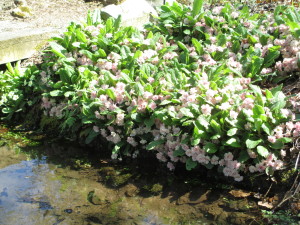
I also had the chance to visit Anita Allen’s garden on the edge of Exmoor (opens for the NGS) where a pink double primrose seeds (yes) itself around prolifically. Anita has several National Collections and her garden is well worth a visit. There are several double primroses with this sort of colour. Sue Jervis was supposed to have been found in the wild in Shropshire, and in Ireland there is one with the distinctive leaves of Petticoat which came from Helen Dillon’s garden called Pink Petticoat. That also seems to grow as vigorously as Anita’s plants.
